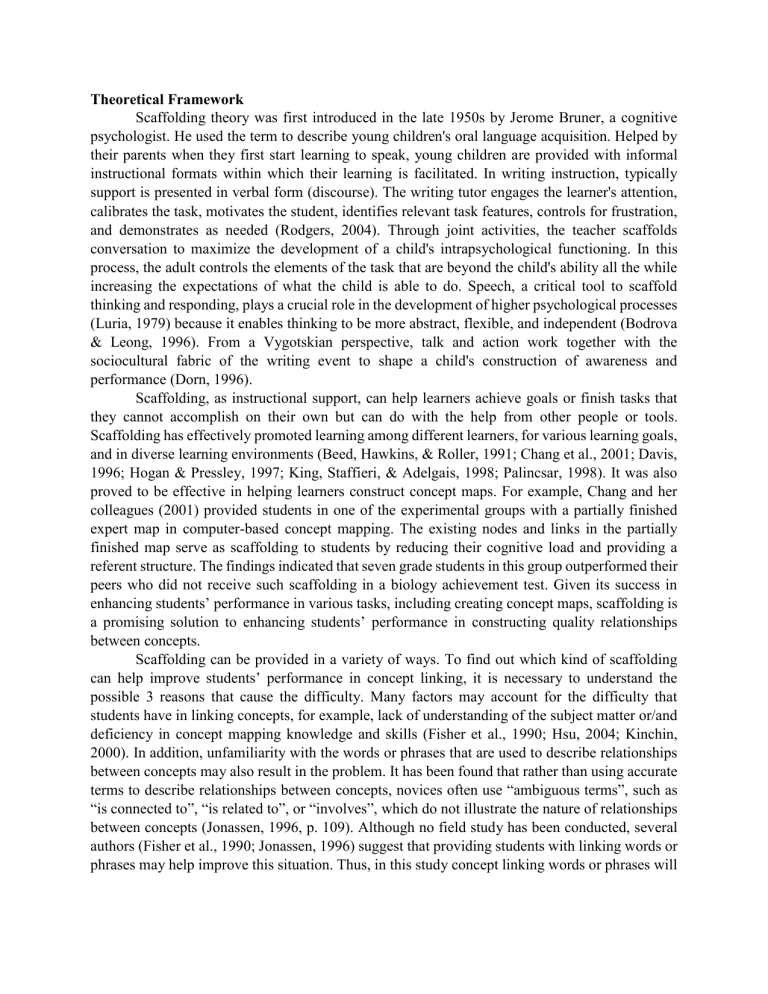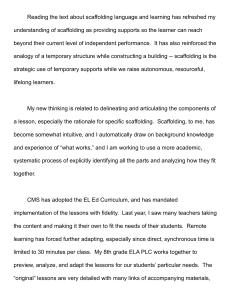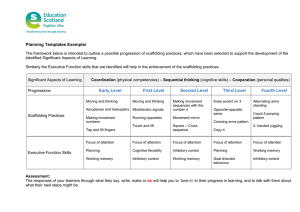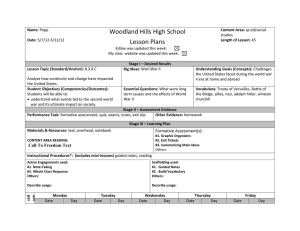
Theoretical Framework Scaffolding theory was first introduced in the late 1950s by Jerome Bruner, a cognitive psychologist. He used the term to describe young children's oral language acquisition. Helped by their parents when they first start learning to speak, young children are provided with informal instructional formats within which their learning is facilitated. In writing instruction, typically support is presented in verbal form (discourse). The writing tutor engages the learner's attention, calibrates the task, motivates the student, identifies relevant task features, controls for frustration, and demonstrates as needed (Rodgers, 2004). Through joint activities, the teacher scaffolds conversation to maximize the development of a child's intrapsychological functioning. In this process, the adult controls the elements of the task that are beyond the child's ability all the while increasing the expectations of what the child is able to do. Speech, a critical tool to scaffold thinking and responding, plays a crucial role in the development of higher psychological processes (Luria, 1979) because it enables thinking to be more abstract, flexible, and independent (Bodrova & Leong, 1996). From a Vygotskian perspective, talk and action work together with the sociocultural fabric of the writing event to shape a child's construction of awareness and performance (Dorn, 1996). Scaffolding, as instructional support, can help learners achieve goals or finish tasks that they cannot accomplish on their own but can do with the help from other people or tools. Scaffolding has effectively promoted learning among different learners, for various learning goals, and in diverse learning environments (Beed, Hawkins, & Roller, 1991; Chang et al., 2001; Davis, 1996; Hogan & Pressley, 1997; King, Staffieri, & Adelgais, 1998; Palincsar, 1998). It was also proved to be effective in helping learners construct concept maps. For example, Chang and her colleagues (2001) provided students in one of the experimental groups with a partially finished expert map in computer-based concept mapping. The existing nodes and links in the partially finished map serve as scaffolding to students by reducing their cognitive load and providing a referent structure. The findings indicated that seven grade students in this group outperformed their peers who did not receive such scaffolding in a biology achievement test. Given its success in enhancing students’ performance in various tasks, including creating concept maps, scaffolding is a promising solution to enhancing students’ performance in constructing quality relationships between concepts. Scaffolding can be provided in a variety of ways. To find out which kind of scaffolding can help improve students’ performance in concept linking, it is necessary to understand the possible 3 reasons that cause the difficulty. Many factors may account for the difficulty that students have in linking concepts, for example, lack of understanding of the subject matter or/and deficiency in concept mapping knowledge and skills (Fisher et al., 1990; Hsu, 2004; Kinchin, 2000). In addition, unfamiliarity with the words or phrases that are used to describe relationships between concepts may also result in the problem. It has been found that rather than using accurate terms to describe relationships between concepts, novices often use “ambiguous terms”, such as “is connected to”, “is related to”, or “involves”, which do not illustrate the nature of relationships between concepts (Jonassen, 1996, p. 109). Although no field study has been conducted, several authors (Fisher et al., 1990; Jonassen, 1996) suggest that providing students with linking words or phrases may help improve this situation. Thus, in this study concept linking words or phrases will be provided to students as scaffolding and the effects that it has on students’ performance in concept linking will be examined. Conceptual Framework Variables Independent: Effectiveness of Scaffolding Instruction Dependent: Assess the Academic Performance of Students INPUT Scaffolding Instruction to Assess the Academic Performance of Students PROCESS OUTPUT Data Gathering through observation and giving scaffolding assessment Effectiveness of Scaffolding Instruction in the Academic Performance of Students





